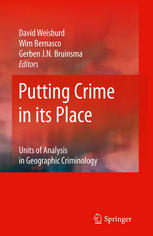

Most ebook files are in PDF format, so you can easily read them using various software such as Foxit Reader or directly on the Google Chrome browser.
Some ebook files are released by publishers in other formats such as .awz, .mobi, .epub, .fb2, etc. You may need to install specific software to read these formats on mobile/PC, such as Calibre.
Please read the tutorial at this link: https://ebookbell.com/faq
We offer FREE conversion to the popular formats you request; however, this may take some time. Therefore, right after payment, please email us, and we will try to provide the service as quickly as possible.
For some exceptional file formats or broken links (if any), please refrain from opening any disputes. Instead, email us first, and we will try to assist within a maximum of 6 hours.
EbookBell Team

4.0
56 reviewsPutting Crime in its Place: Units of Analysis in Geographic Criminology focuses on the units of analysis used in geographic criminology. While crime and place studies have been a part of criminology from the early 19th century, growing interest in crime places over the last two decades demands critical reflection on the units of analysis that should form the focus of geographic analysis of crime. Should the focus be on very small units such as street addresses or street segments, or on larger aggregates such as census tracts or communities? Academic researchers, as well as practical crime analysts, are confronted routinely with the dilemma of deciding what the unit of analysis should be when reporting on trends in crime, when identifying crime hot spots or when mapping crime in cities. In place-based crime prevention, the choice of the level of aggregation plays a particularly critical role. This peer reviewed collection of essays aims to contribute to crime and place studies by making explicit the problems involved in choosing units of analysis in geographic criminology. Written by renowned experts in the field, the chapters in this book address basic academic questions, and also provide real-life examples and applications of how they are resolved in cutting-edge research. Crime analysts in police and law enforcement agencies as well as academic researchers studying the spatial distributions of crime and victimization will learn from the discussions and tools presented.